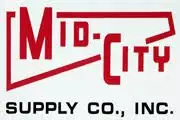How to Calculate Superheat and Subcooling for HVAC and Refrigeration Systems
What is Superheat

Ensuring proper superheat in HVAC and refrigeration systems is very important. Correct superheat ensures that the compressor is not being flooded. Flooding occurs when liquid refrigerant makes its way back to the compressor. This can cause lubrication issues and could damage the compressor.
How to Calculate Superheat
Tools Needed
- Refrigeration gauge manifold set with hoses.
- Pipe thermistor
- PT Chart
Obtain Superheat
- Connect your gauge manifold the system and record your low side pressure.
- Connect your pipe thermistor to the suction line as close to the condenser as possible and at least 6 inches from the compressor.
- Using your PT Chart convert your low side pressure from step 1 to temperature.
- The difference between these 2 temperature readings is your calculated superheat.
(Suction line temp – Saturation temp = Superheat)
- Consult manufacturer for desired superheat.
High Superheat = Starved Evaporator
Low Superheat = Flooded Evaporator
What is Subcooling
Subcooling is the measured value of the amount the refrigerant liquid is cooled before exiting the condenser.
How to Calculate Subcooling
- Connect your gauge manifold the system and record your high side pressure.
- Connect your pipe thermistor to the liquid line as close to the evaporator as possible and before the metering device.
- Using your PT Chart convert your high side pressure from step 1 to temperature.
- The difference between these 2 temperature readings is your calculated subcooling. (Saturation temp – Liquid Line temp = Subcooling)
- Consult manufacturer for desired subcooling.
High Subcooling = Flooded Condenser
Low Subcooling = Starved condenser
Diagnosing your system using superheat and subcooling
High Superheat and Low Subcooling
Your refrigeration system is undercharged.
Low Superheat and High Subcooling
Your refrigeration system is overcharged.
High Superheat and High Subcooling
You have a possible blockage within the refrigeration system.
Low Superheat and Low Subcooling
Metering device is either too large or not installed.




























































































